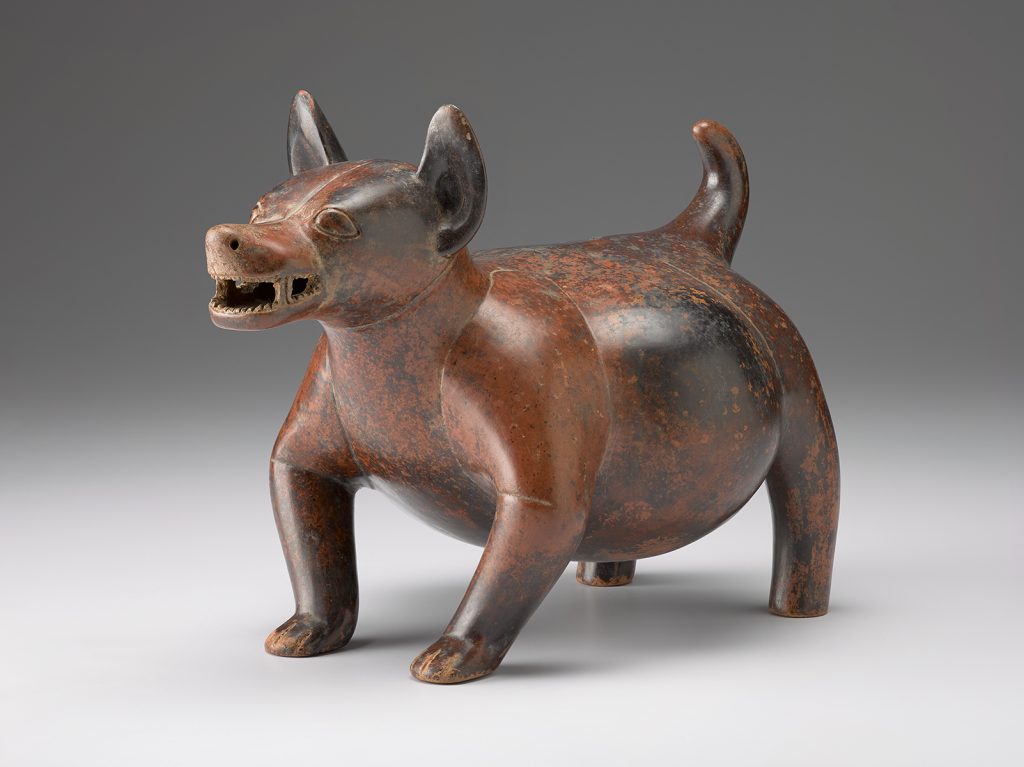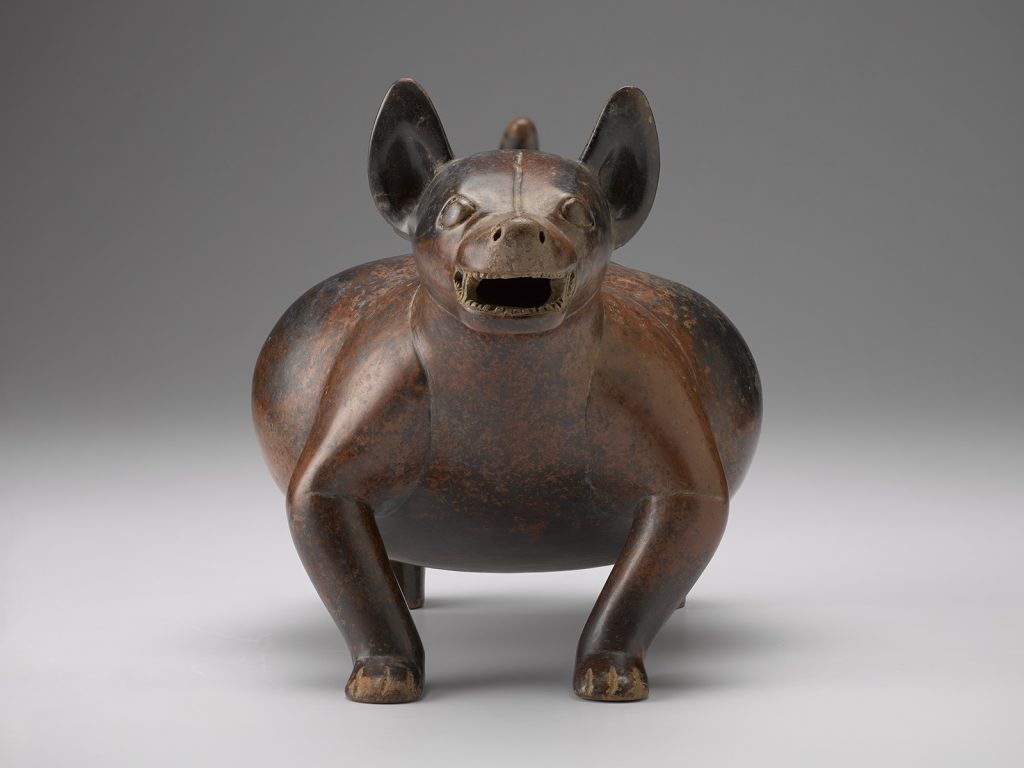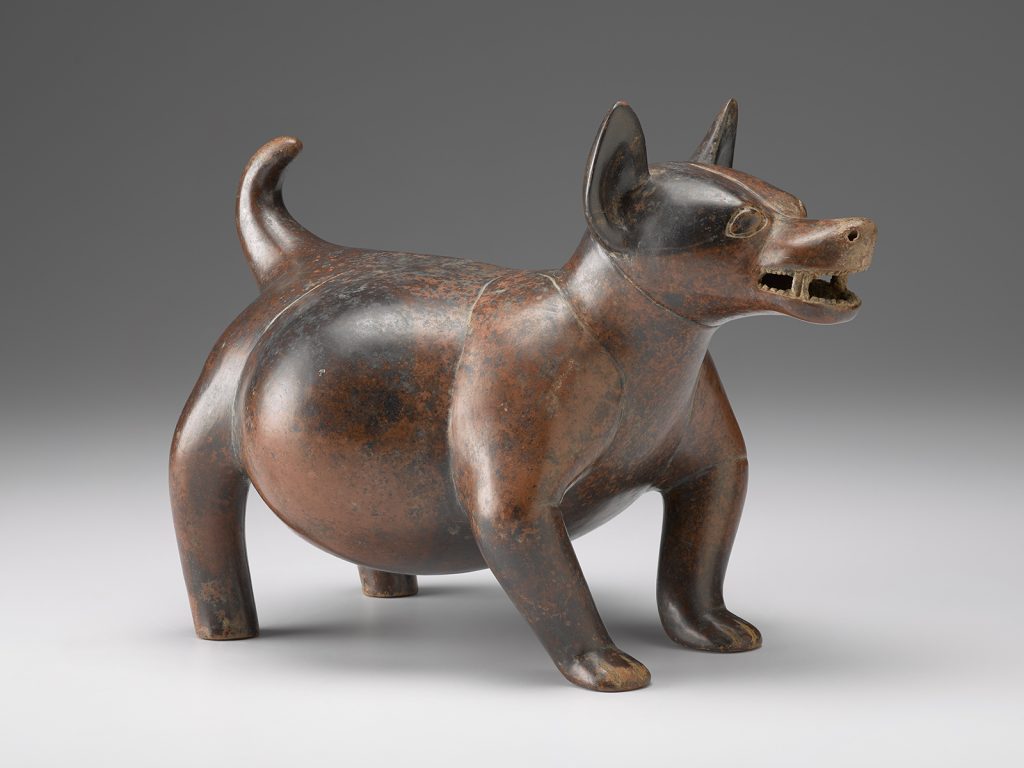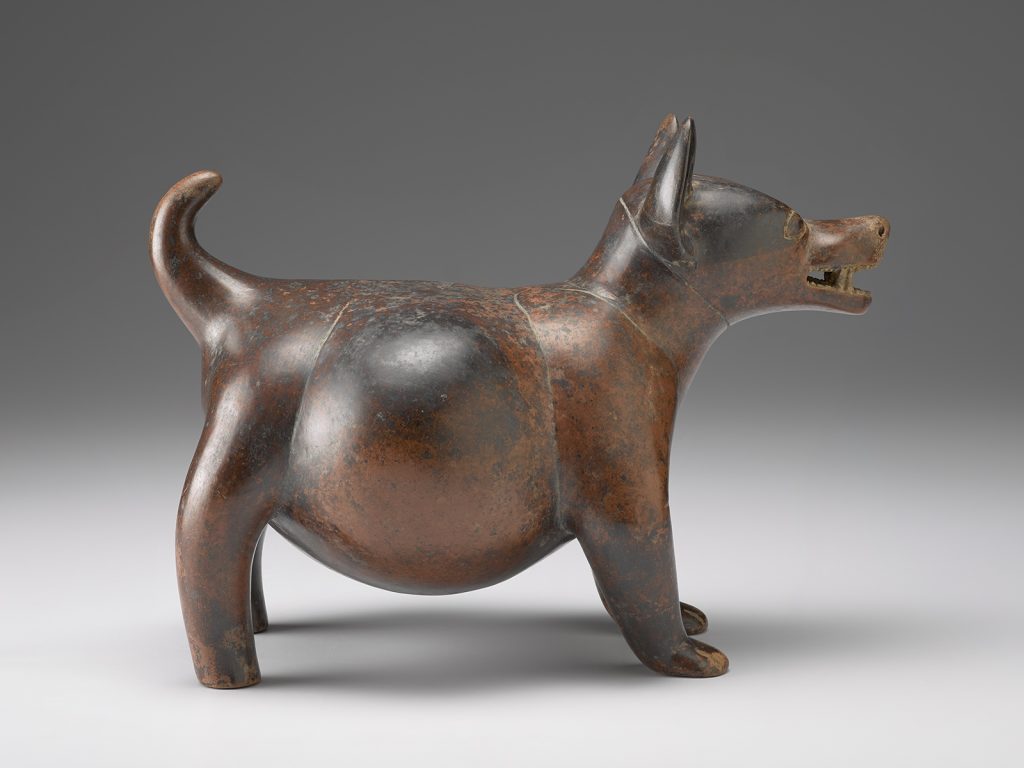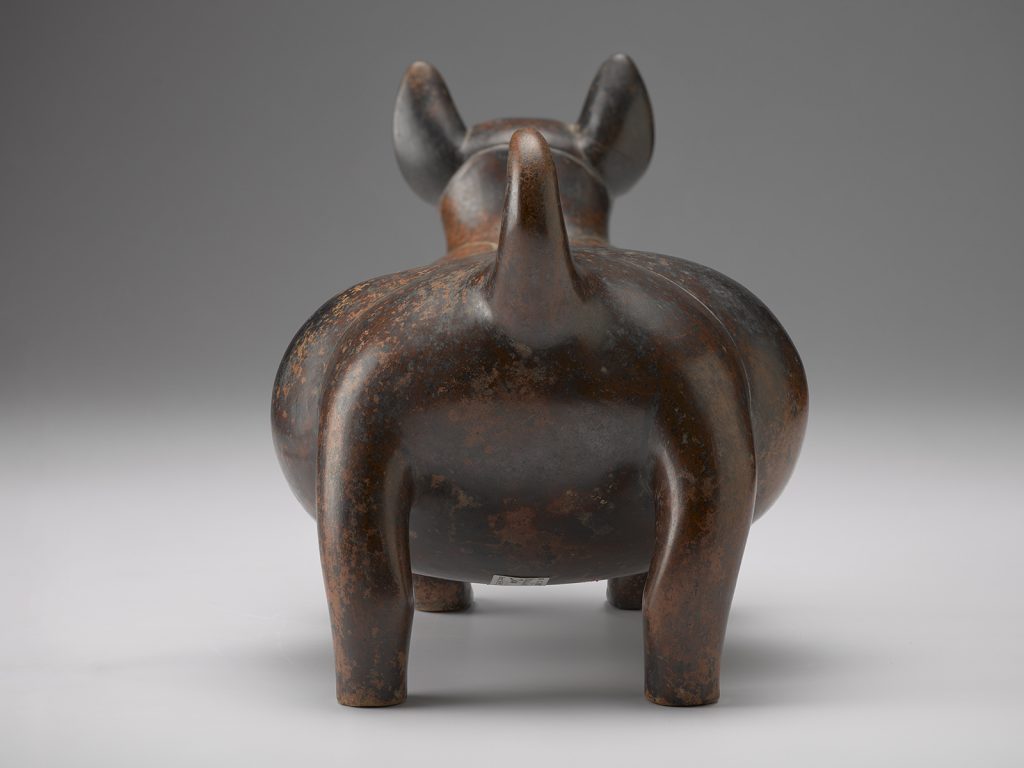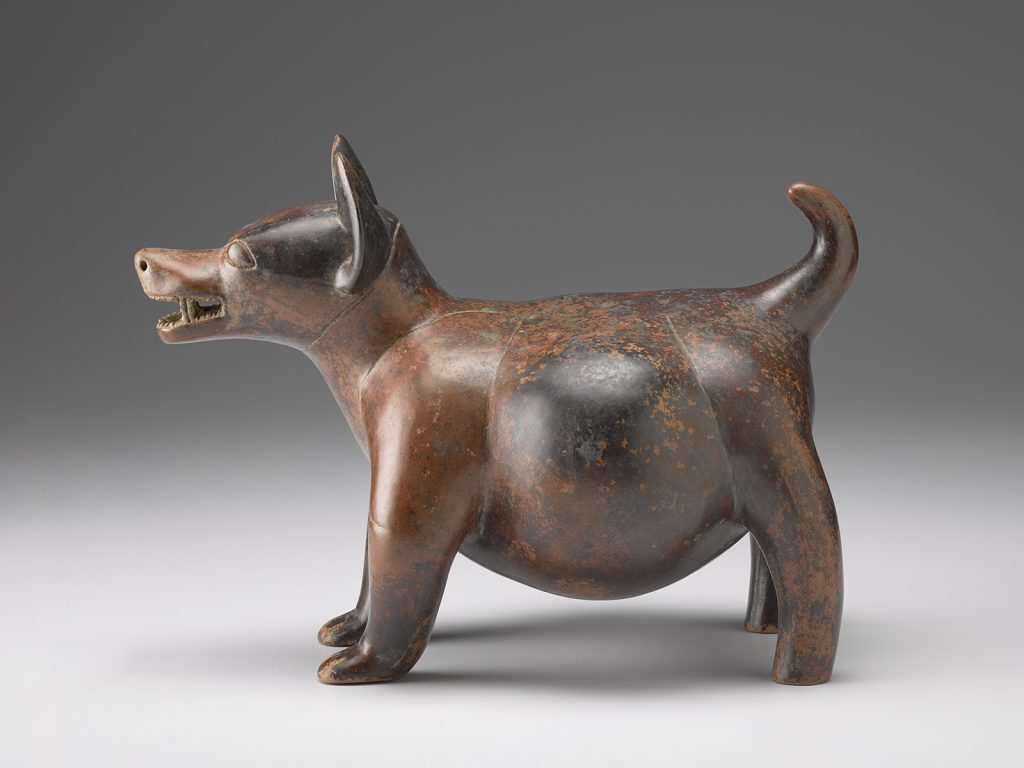Dog Effigy (work of art)
Artwork Info
About
Key Ideas
- For the Aztec people, dogs were part of their daily life as well as their diet. This object may have represented a companion for the afterlife as well as a gift of food for the deceased person to eat during their journey in the afterlife.
- Colima is a small state located in western Mexico.
- The variety of reds and browns used in this effigy may represent the actual color of the dog’s skin. This breed of dog does not have fur.
Learn More
This is a hollow sculpture of a hairless dog, or xoloitzcuintli (pronounced show-low-eats-kweent-lee). This is the animal that is most frequently depicted in Colima art. The vessel itself is zoomorphic, which means it is in the form of an animal. It has a reddish-brown finish, and its body is depicted realistically. It has carved eyes, and its mouth is open and showing the teeth in an aggressive expression. The dog’s neck and tail appear to have been restored, and there is a chip in its front left leg.
In West Mexico, where this dog effigy was found, mourners placed ceramic “guide dogs” in tombs because they were considered proper company for the dead. Mesoamerican societies believed that dogs provided companionship and protection to people in daily life, and in the afterlife they helped guide the souls of the deceased to the underworld. The journey to the underworld included the challenge of crossing a river, and only a dog could help the person’s soul reach the other side.
tags: function, ritual, observation
Additional Resources
Resources for Teachers
- Learn more about the Dog Effigy vessel at The Walters Art Museum and compare it to this one.
- Read an article about Colima and its indigenous population.
- The exhibition catalogue Heritage of Power: Ancient Sculpture from West Mexico provides more context about West Mexican ceramic sculpture.
Resources for Students
- Learn more about Colima.
- Read a blog post about Mexican hairless dogs.
- Learn about the history of xoloitzcuintli from the Natural History Museums of LA County website.
- Listen to curator Ángel González López discuss dogs in Ancient Mexico and Dog Effigy.

